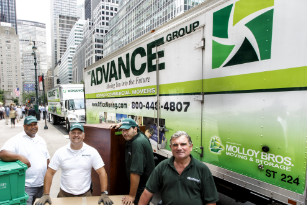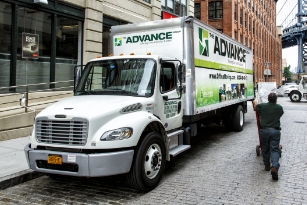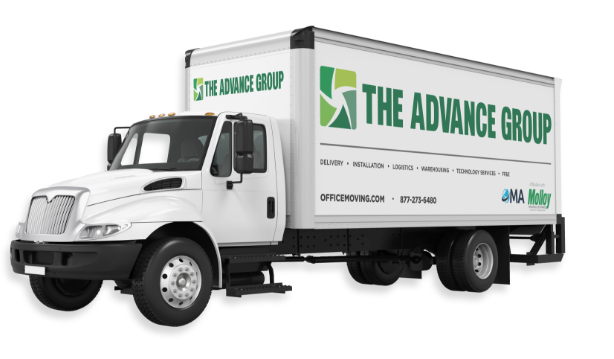Planning a Retail Store Relocation

A retail store relocation can be both an exciting and daunting process. By managing current operations, you add a layer of logistics and project management that can be a full-time endeavor.
While the move offers opportunities for growth, improved customer access, and enhanced sales, it also calls for careful preparation and execution to guarantee minimal disruption to your business and employees. We will guide you through the steps of an effective retail store relocation, focusing on fixtures and equipment, as they play a significant role in the store’s aesthetics and functionality.
Establishing a Project Plan
Creating a well-thought-out project plan is the first step in any successful store relocation. Outline your objectives, timeline, budget, and critical milestones. Give team members tasks and communicate to keep everyone on the same page. A comprehensive plan should answer the following questions:
- What is the timeline for the move?
- What are the budget constraints?
- Who are the key stakeholders and team members?
- What are the milestones and critical deadlines?
Assessing the New Location Before the Move
Conduct a thorough assessment of the new store location, evaluating its accessibility, parking facilities, local competition, and customer foot traffic. It’s also essential to check the layout and infrastructure to determine how your current fixtures and equipment will fit and function in the new space.
As you review the new store layout, you’ll plan to optimize customer flow and enhance the shopping experience. This is when you first consider the FF&E you currently have and whether it is still relevant to your new location.
Inventory of Fixtures and Equipment
Make a detailed inventory of all existing fixtures and equipment. This includes shelving units, display racks, counters, lighting, POS systems, and other essential installations. Create a checklist of what you are considering for the new location to help you decide which items to keep, sell, or dispose of.
- Are there any items that are outdated or in poor condition?
- What equipment might be more beneficial to replace than move?
- Do you need additional fixtures or new equipment to fit the new store layout?
If you use a professional moving service, keep them informed of your decisions regarding the FF&E. Full-service movers can help assemble the new FF&E in the new location if appropriately timed. Some may also offer decommissioning services to help you find new owners for the old FF&E.
If there are FF&E that you need clarification on, speak with your mover about warehouse and storage options. Holding items until you know their destination may be less expensive than replacing them later.
Planning the Layout
The store layout is crucial for creating an inviting and efficient shopping environment. Leverage your customer behavior and sales data knowledge to inform your layout decisions. Collaborate with a designer or utilize specialized software to create a detailed floor plan that includes:
- Placement of shelves, racks, and displays
- Product placement and flow
- Positioning of cash registers and self-checkout kiosks
- Areas for promotional displays and seasonal items
- Storage and back-office areas
Coordinating with Vendors and Suppliers
Inform your vendors and suppliers about your relocation plans well in advance. Coordinate with them to adjust delivery schedules, update contact information, and manage other logistical changes.
With a new retail location, you may have a different storeroom configuration and anticipate a change in your product mix. Ensure that your future deliveries and inventory management align with your expected setup by actively working with your suppliers rather than relying solely on order history.
Deciding Professional Movers vs. DIY Moving
Choose whether to manage the relocation internally or by hiring professional movers. While hiring professionals has an additional cost, it often results in a smoother, more efficient transition. DIY moves can reduce expenses but may also increase downtime and distract employees from focusing on the customers. In addition, business owners have to ensure their insurance properly covers the activities involved in a move.
Disassembling, moving, and reassembling fixtures and equipment is another challenge for professional movers. Racks, shelving, displays, and other fixtures are harder to assemble than they seem. Professional movers have more experience and can handle this part of a retail move better than DIY movers.
Communicating with Customers
Keep your clients in the loop during the relocation process. Use social media, email newsletters, and in-store signage to inform them about the move date and the new location address. Consider offering special promotions or events to incentivize visits to the new store.
Moving and Setup
When the move begins, ensure that all team members know their responsibilities. Double-check the new location for readiness, including utilities, internet connectivity, and security systems. Prep the location with signs to indicate where you want inventory items located. Plan the “drop-off” locations in each area so workers can easily place and install FF&E when ready. If you are working with professional movers, ask for their advice about organizing the setup.
Settling in Post-Move
After the move, take time to review the entire relocation process. Identify any challenges encountered and document how you resolved them for future reference. Gather feedback from employees and customers to understand what worked well and what could be improved.
Additionally, initiate marketing campaigns to promote your new store location and re-engage your customer base. Hosting a grand opening event can attract local media attention and drive foot traffic.
Securing the Ideal Relocation Help
Relocating a retail store is a complex process that requires careful planning. By establishing a clear project plan, assessing the new location, and coordinating with your team and suppliers, you can ensure a successful transition that minimizes downtime and maximizes business opportunities. With the right strategies and a focus on enhancing the customer experience, your new store location can quickly become a thriving hub for your retail business.
Let us help. Contact us today for a quote.








